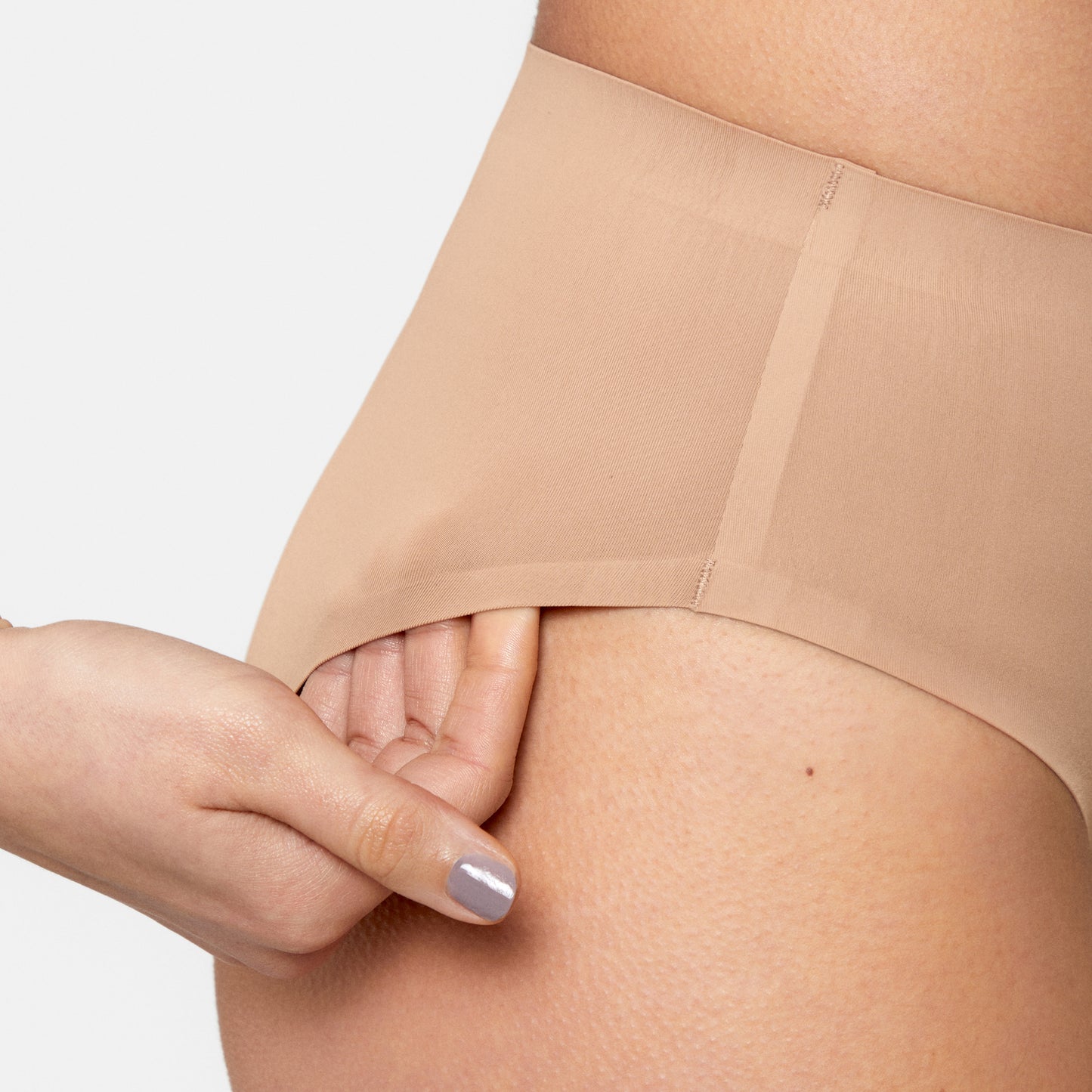Understanding incontinence and discovering innovative solutions
Incontinence can have various causes and Bladder weakness does not always have to occur in old age. It can also be caused by diseases or after pregnancy so it is important to train the pelvic floor after giving birth. femtis incontinence underwear is comfortable and discreet at any time.
You are wondering where incontinence comes from and what measures you can take to minimize the symptoms or get rid of them completely? We have summarized the most important information for you here.
Symptoms and signs of incontinence and bladder weakness
At what point do I have bladder weakness or incontinence and when do we speak of what? In fact, Bladder Weakness and Incontinence describe the same thing, the involuntary loss of urine. Colloquially, the term bladder weakness is more commonly used. Did you know that continence describes the ability to control one's own bowel or urine loss?
You may have experienced urine leakage when laughing, coughing, sneezing or lifting something heavy. Other times, you may feel a strong urge to urinate, but can't get to the toilet fast enough. This results in emptying of the bladder. The so-called micturition intervals describe the intervals at which this emptying takes place.
Various forms and types of incontinence
There are different forms of incontinence:
- Stress incontinence
- Urge incontinence
- Mixed incontinence
- Overflow incontinence
- Reflex incontinence
- Fecal incontinence
In women, stress incontinence predominates (approx. 50 percent), followed by mixed incontinence (approx. 30 percent) and urge incontinence (approx. 15 percent). But what does it mean?
Stress incontinence is usually a weakening of the pelvic floor muscles or weakened connective tissue. Both often occur during pregnancy and sometimes persist afterwards. In this case, regular pelvic floor training is worthwhile to strengthen the muscles.
Urge incontinence or urinary urgency incontinence is when there is a neuronal problem. In this form, sufferers feel a sudden strong urge to urinate, causing the bladder to contract and then complete loss of urine. Mixed incontinence refers to a mixture of stress and urge incontinence.
Less common is overflow incontinence, which often occurs in men and rarely in women. The bladder can no longer be emptied completely and residual urine always remains because, for example, the bladder muscle is too weak. Reflex incontinence has serious backgrounds. It is usually a side effect of bad injuries or diseases.
Unlike urinary incontinence, fecal incontinence does not treat the involuntary leakage of urine but as the name suggests, it refers to the urge to defecate with subsequent uncontrolled loss.
In addition, there is the so-called extraurethral incontinence, in which an unphysiological sudden or constant loss of urine occurs through the skin, the anus or the vagina.
Common causes of bladder weakness and incontinence
The different incontinence profiles are due to different causes. For example, bladder weakness can be caused by pregnancy, a neuronal problem, a weakening of the musculature or serious injuries or illnesses. The interaction between urine storage and emptying no longer functions properly.
Various mechanisms can cause urinary incontinence. For example, urethral stricture, outflow dysfunction and dysfunction of the closure mechanisms can all lead to symptoms of urinary incontinence. Often, more than one of these mechanisms occurs:
- Nerve damage or irritation resulting from surgery
- Neurological diseases such as multiple sclerosis, Parkinson's disease, Alzheimer's disease, a brain tumor or stroke
- Constant irritation of the bladder, for example, due to bladder stones or urinary tract infections such as cystitis
- Surgeries - for example, removal of the uterus or prostate - and radiation of the abdomen
- Medications, such as those for high blood pressure, painkillers and antidepressants, can also cause the development of incontinence or aggravate existing incontinence
IG Live Talk with gynecologist Miriam M Mottl
To coincide with our launch of the Incontinence Collection, we spoke with gynecologist and sex doctor Miriam M. Mottl of @herzensdialoge about the topic of bladder weakness and bladder dysfunction. We talk about questions like: At what point does one speak of bladder weakness and what can I do about it? We also answer some more questions from the Instagram community.
Measures and strategies for coping with incontinence
How can incontinence be managed and what measures and strategies help? Which therapy is helpful? How do I counteract dribble incontinence, a mild urinary incontinence? Here are a few tips and innovative aids, as well as how you can already do something preventively. Your urologist can perform urodynamics on you in order to make a statement about various functional disorders of the bladder, such as incontinence.
Tips for prevention and strengthening bladder control
Practicing bladder control can make your life easier in the long run. There are some tips on how to proceed:
- Don't hold urine too long, it weakens the muscle
- Practice interrupting the flow of urine at times
- Pelvic floor exercises to strengthen the bladder muscles
- Toilet training: postpone going to the toilet for 5 min.
Innovative aids and solutions for incontinence
There are now various incontinence aids as solutions for incontinence, but mostly diapers or pads are used. However, the feeling of wearing them is not particularly nice. Incontinence underwear is a relaxed alternative to pads. You don't feel them and simply put them on like your usual underwear. It absorbs urine and keeps you dry, so you can continue your active life.
Ways to prevention of bladder weakness
There are some ways in which you can already prevent incontinence:
- Exercise pelvic floor muscles
- Take it easy during physical exertion
- Correct behavior on the toilet
- Reduce excess weight
- Ensure regular bowel movements
- Avoid diuretic drinks
Avoiding diuretic drinks, you think? Perhaps you have already noticed that you often have to go to the toilet after drinking some liquids. You should better reduce these drinks:
- Caffeinated coffee
- Black tea
- Green tea
- Herbal tea made from mate, birch and nettle
- Acidic fruit juices from citrus fruits (for example orange juice or grapefruit juice)
- Carbonated drinks
- Soft drinks with sugar or sweeteners
Sources:
Gitschel, K. et al: Störungen der Harnausscheidung – Diagnostik und Therapie in der Pflege. 1. Auflage. Kohlhammer Verlag. Stuttgart 2013.
Petros, Peter, et al. Ratgeber Inkontinenz und Beckenbodenbeschwerden: Hilfreiche neue Therapie nach dem integralen System. Deutschland, Springer Berlin Heidelberg, 2016.
Werner, Sylke. Kontinenzförderung: Ein Leitfaden. Deutschland, Kohlhammer Verlag, 2012.
Roth, Prof. Dr. med. Stephan. Blase gut - alles gut: Ihr Navigator für das Herz im Unterleib - bei Entzündungen, Inkontinenz, Harndrang & Co.. Deutschland, Knaur MensSana eBook, 2022.


